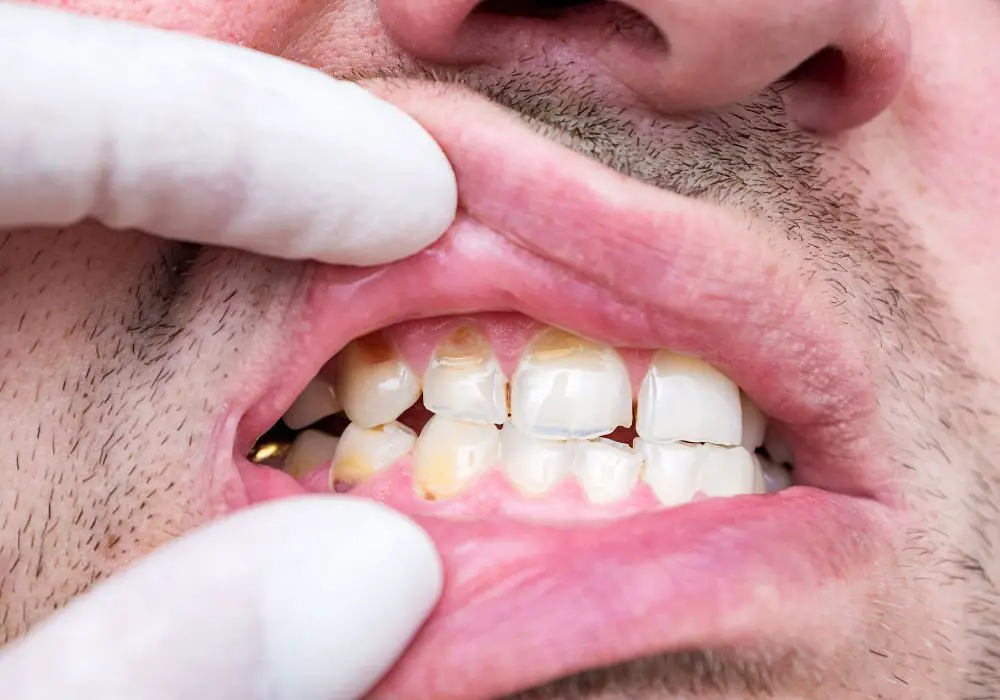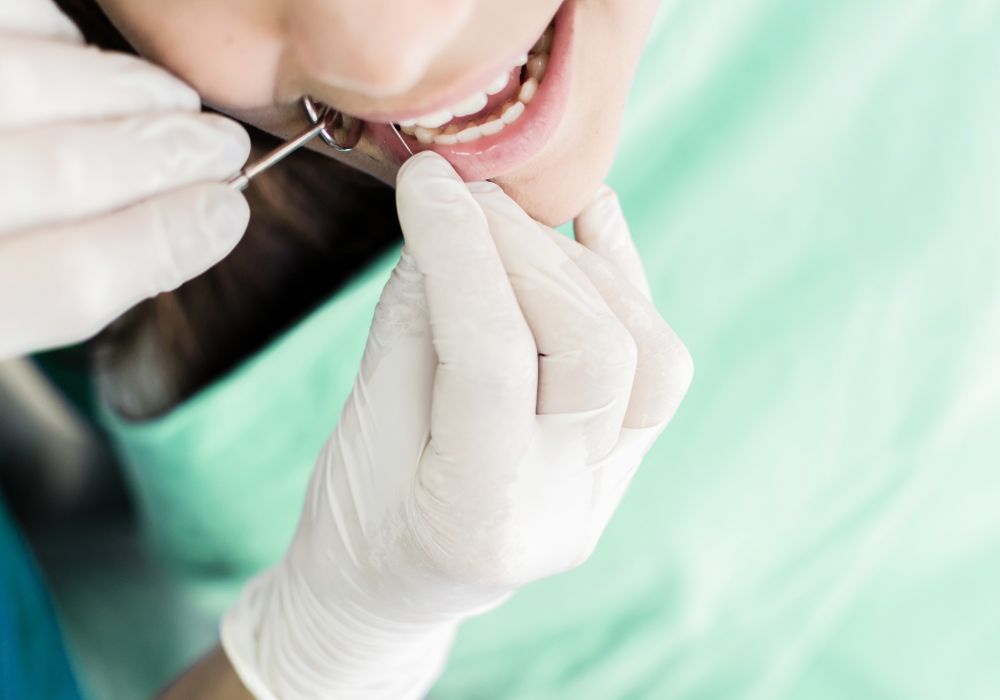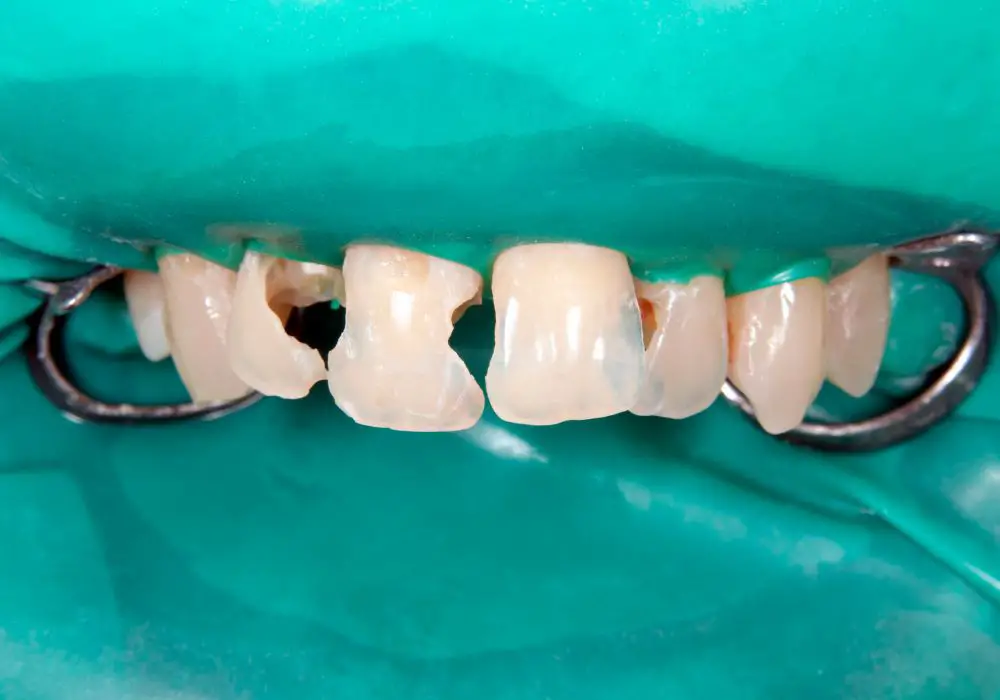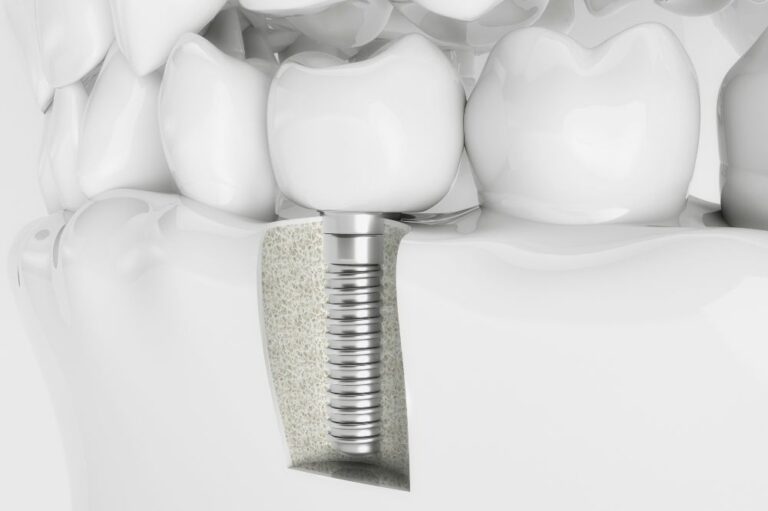Understanding tooth decay and erosion in depth
Your teeth can begin to crumble, chip, crack or break down for a variety of reasons. The main causes of tooth decay, erosion and structural damage include:
1. Cavities
Cavities are holes or areas of decay that form when plaque builds up on the teeth. Plaque is a sticky, clear film made up of bacteria, food debris and saliva that constantly forms on the teeth. If left undisturbed, this plaque starts to eat away at the tooth enamel, which is the outer protective layer.
As the plaque bacteria metabolize the sugar and starch in foods, they release acid as a byproduct. This acid steadily dissolves and demineralizes the enamel, allowing cavities to take hold. Small cavities begin as tiny white spots on the teeth, where minerals have leached out. These areas continue growing into larger holes or decayed spots if the process isn’t stopped.
Left untreated, cavities become larger, deeper and more damaging. They can lead to tooth sensitivity, toothache, infection, and eventual loss of the tooth structure. Cavities most often form around the biting surfaces of molars and between teeth where plaque easily builds up. Proper daily brushing and flossing helps disrupt plaque before it turns into tooth-eroding acid.
2. Acid erosion
Acidic foods and beverages can directly erode and dissolve tooth enamel over time. Acids strip away vital minerals like calcium and phosphate from the enamel rods. This causes the enamel to weaken and slowly wear away, making teeth more susceptible to cavities and decay.
Frequent consumption of acidic foods and drinks allows acid to continually bath the teeth. Soda, sports drinks, apple cider vinegar, citrus fruits and juices are common acid sources. The higher the acidity, the faster erosion occurs. Acidic vinegar dressings, vitamin C supplements, sour candy, pickles and white wine also contribute.
Those with chronic acid reflux face even more acid exposure as stomach contents back up and contact teeth. The acidic nature of vomit from eating disorders or morning sickness also presents a threat. After any acid contact, avoid brushing right away as that can further wear softened enamel. Rinse with plain water to help neutralize acid instead.
3. Bruxism – grinding and clenching
Constant grinding or clenching of the teeth eventually takes it toll. This forceful, excessive contact between upper and lower teeth is termed bruxism. It often happens involuntarily during sleep, but some people unconsciously clench their jaw or grind their teeth while awake too.
The constant pressure and friction wears down tooth enamel. It also over-taxes the ligaments holding teeth in their sockets, leading to loose teeth. Severe bruxism can result in jaw pain, cracked teeth, chipping, headaches and flattening of the tooth surface and biting edges. This type of tooth wear may require dental appliances and mouthguards to prevent further damage.
4. Trauma and injury
Sudden injuries to the mouth from sports impacts, falls, accidents or trauma can also chip, crack or fracture teeth. The sheer force of the blow damages the hard enamel coating of the teeth. This exposes the more sensitive dentin material underneath and makes teeth painfully sensitive.
Cracked teeth may have no pain at first, but as the fracture expands tooth pain can become noticeable with biting or temperature changes. A single severe blow can even completely displace or knock a tooth out of the socket. Seeking emergency dental care is critical for any dental trauma before the tooth is lost completely or decay sets in.
Factors that increase your risk of crumbling teeth

A variety of health conditions, habits and lifestyle factors can all raise your risk of developing tooth decay, acid erosion and eventually crumbling teeth:
- Poor oral hygiene – Not adequately brushing and flossing daily allows plaque to continually build up. This feeds cavity-causing bacteria and eats away at enamel.
- High sugar diet – Sugary foods feed the bacteria in dental plaque that produce enamel-eroding acid as a byproduct of digestion. Candy, baked goods, sugar-sweetened beverages and dried fruit are common culprits.
- Acidic diet – Frequent exposure to acidic foods and beverages directly softens and dissolves tooth enamel through acid erosion.
- Dry mouth – Saliva helps neutralize acid, rinse away food debris and strengthen enamel. Dry mouth leaves teeth unprotected. Some medications reduce saliva flow.
- Gastroesophageal reflux disease (GERD) – Stomach acid flows up and directly contacts, eroding tooth enamel. Tends to affect back molars.
- Eating disorders – Frequent vomiting brings stomach acid in contact with teeth, promoting erosion. Bulimia is a prime example.
- Bruxism – Grinding and clenching puts excessive biting force on teeth, damaging enamel and breaking teeth down. Often done during sleep without awareness.
- Medications – Hundreds of common medications reduce saliva flow, leaving the mouth dry. Examples are decongestants, certain blood pressure pills, antihistamines.
- Drugs and alcohol – Both methamphetamine and alcohol are associated with teeth grinding and clenching.
- Tobacco use – Smoking and chewing tobacco are linked to increased gum disease and tooth loss.
- Fluoride deficiency – Fluoride makes enamel more resistant to acid and promotes remineralization. Low fluoride exposure weakens enamel.
- Age – As we age, the thin biting edges of front teeth often become worn, transparent and chisel-shaped from a lifetime of chewing forces. Root surfaces can also become more exposed with receding gums.
Preventing and treating crumbling teeth
Fortunately, there are many effective ways to help stop the breakdown of teeth and maintain your dental health:
- Brush properly twice a day – Use a soft-bristled toothbrush and fluoride toothpaste. Take your time and brush all surfaces. Replace your toothbrush every 3-4 months.
- Floss daily – Gently floss between teeth to remove plaque where your toothbrush can’t reach. Flossing is vital for preventing cavities between teeth.
- See your dentist regularly – Get professional cleanings and checkups every 6 months to maintain oral health. Any problems can then be caught at an early and more treatable stage.
- Avoid sugary and acidic foods – Limit your consumption of sodas, candy, citrus fruits, vinegar, alcohol and other items that can directly erode enamel.
- Rinse after eating – Swish water in your mouth after consuming acidic foods or drinks. This helps neutralize acid and wash away sugar.
- Use fluoride – Fluoride strengthens and remineralizes enamel to make it more decay-resistant. Get regular fluoride treatments at the dentist. Use daily fluoride mouthwash.
- Wear a nightguard – If you grind your teeth, wearing a custom nightguard helps prevent cracked teeth, chipping and wear issues.
- Monitor dry mouth – Stay hydrated, chew sugarless gum, and talk to your doctor if medications are causing chronic dry mouth. There are treatments available to increase saliva flow.
- Don’t smoke – Tobacco stains teeth and promotes gum disease that can lead to tooth loss. Quitting greatly improves long-term dental health.
- Get cracks and chips fixed ASAP – Small fractures and defects can often be repaired with tooth-colored fillings or bonding material. Larger repairs may need crowns or veneers.
Professional treatment options for damaged teeth

Dentists have many ways to restore form and function to worn or broken teeth:
- Fillings – Small pits and defects can be filled with composite resin or amalgam material to protect the tooth.
- Crowns – Damaged or fractured teeth are rebuilt with a durable crown cap that covers the entire visible portion. Made of porcelain, gold, or ceramic.
- Veneers – Thin porcelain facings are bonded to the front teeth to mask chips, cracks, and minor alignment issues. Custom-made for a natural look.
- Root canal – Needed if tooth decay reaches the pulp. Cleans out damaged pulp, seals the tooth, and crowns restore shape. Saves severely damaged teeth.
- Tooth extraction – Removing an non-restorable infected or decayed tooth. Options to replace it include bridges, implants, or orthodontic closure.
- Gum grafting – Transplanting gum tissue to protect exposed roots and make gums thicker and healthier again.
- Bite guards and nightguards – Plastic custom trays worn over the teeth prevent grinding damage during sleep or sports play.
With prompt professional dental treatment, most cases of chipped, cracked, and eroded teeth can be repaired and restored to full function. Dentists have many tools to protect your smile.
At-home remedies for tooth sensitivity or mild discomfort
For moderate tooth sensitivity or pain from a cracked tooth, some at-home remedies can provide temporary relief until you can see a dentist:
- Sensitive toothpaste – Contains compounds like potassium nitrate to numb nerve pain in exposed dentin tubules.
- Over-the-counter pain relievers – Anti-inflammatories like ibuprofen, naproxen or acetaminophen can relieve discomfort.
- Cold compress – Place an ice pack or cold cloth against your cheek to minimize facial swelling and inflammation.
- Salt water rinse – Swishing with a salt water solution helps soothe oral pain and draw out infection.
- Clove oil – Applying a small amount of clove oil to a painful tooth/gum area provides numbing.
- Soft foods – Stick to soft, lukewarm foods. Avoid very hot or cold items that trigger sensitivity. Don’t chew on the affected side.
While home remedies can temporarily alleviate pain, they don’t treat the underlying tooth damage. Be sure to see your dentist as soon as possible for an exam and follow-up care.
When to seek emergency dental care?
Seek emergency dental care immediately if you experience:
- Severe toothache or debilitating tooth sensitivity
- Prolonged bleeding from the gums
- Red, extremely swollen gums or facial swelling
- A visibly cracked or fractured tooth with pain upon chewing
- A loose tooth that moves on its own or feels elevated
- A tooth that has been knocked out completely
Knocked out teeth have the best prognosis for replantation if reinserted quickly by a dentist. Likewise, a painful loose tooth needs splinting and stabilization right away to have the best chance of saving it. Infection and serious dental problems should be treated immediately before they spread.
Many dentists offer emergency or walk-in services, even outside regular office hours. Seek prompt help whenever you notice broken teeth, unexplained toothache, or trauma to prevent additional damage.
Long-term outlook for crumbling teeth

The prognosis for badly damaged teeth depends on:
- How soon treatment is obtained
- Extent of inner pulp involvement
- Remaining healthy tooth present below gum line
- Skill of the treating dentist
Small fractures, mild erosion, and surface cavities often respond very well to professional repair and restoration. The sooner these issues are fixed, the better. More extensive structural cracks extending below gum level have a poorer outlook.
Once the tooth pulp and root canals become infected due to decay exposure, the tooth is unlikely to be saved. Extraction is usually necessary. However, decay caught early before it reaches the root can still be treated successfully with root canals, crowns and fillings. An experienced dentist can remedy many problems.
With prompt treatment and ongoing prevention, teeth can often be stabilized and restored to full function. Getting frequent dental checkups allows early intervention before major damage occurs. By staying vigilant, you can keep your teeth strong and intact for decades to come.
Common Questions
What does it mean if there is sudden pain when I drink something hot or cold?
Sudden pain from hot or cold foods or drinks is often a sign of tooth sensitivity or a crack in the enamel. The inner dentin layer may be exposed, causing sharp pain from hot and cold stimulation.
Dentin contains thousands of tiny tubules leading to the tooth’s nerve center (the pulp). External stimuli easily excite these nerves. Exposure lets problems like temperature changes provoke a painful response.
See your dentist right away to identify the cause. Treatment may involve repairing cracks, using desensitizing toothpaste, applying dental sealants or bonding material to cover exposed areas. Root canal therapy may be needed if the pulp is involved.
My front tooth feels slightly loose. What should I do?
A loose permanent tooth is always cause for concern. It likely means the root structure or periodontal ligaments holding the tooth in place have become damaged or diseased in some way.
Trauma, advanced gum disease, injury, severe tooth decay, and excessive biting forces can all contribute to loose teeth. See your dentist immediately to determine the cause. Don’t delay treatment.
A loose tooth may require extraction or stabilization with procedures like root planing, gum surgery, splinting, root canals, or dental implants. Leaving it alone risks losing the tooth completely or developing an infection. Prompt dental expertise gives the best chance of saving loose teeth.
What are dental veneers and when are they needed?
Veneers are thin, natural-looking porcelain facings that are bonded or cemented to the front surface of teeth. They serve to cover chips, cracks, minor misalignments, gaps, discoloration and other aesthetic issues.
Veneers provide a seamless, uniform appearance. They mimic the light-reflecting properties of natural enamel for a bright white smile. Typically only 0.5 – 1 mm thick, they conserve more healthy tooth structure vs. crowns.
Veneers are indicated when front teeth have cosmetic defects that cannot be adequately repaired with just tooth-colored fillings or bonding. They effectively mask irregularities while restoring shape, function, and a pleasing symmetry to the smile.
Can teeth be saved after cracks extend below the gum line?
It depends on the severity and location of the cracks. Small hairline cracks and minor fractures limited to the outer enamel layer can often still be restored with crowns or veneers.
However, cracks extending vertically into the dentin and pulp tissue have a poorer prognosis. Likewise cracks running horizontally below the gum line often require extraction. This type of damage frequently means a split or fractured root.
Heavily fractured teeth with extensive loss of structure are usually deemed non-restorable. Your dentist will assess options like root canals, surgical extrusion procedures, gum surgery or dental implants to replace hopelessly damaged teeth.
What home remedies help soothe pain from a cracked or chipped tooth?
- Rinsing with warm salt water helps keep the area clean and draws out fluid buildup.
- Taking over-the-counter pain relievers like acetaminophen, ibuprofen or naproxen can ease tooth discomfort.
- Applying a cold compress against your cheek reduces facial swelling.
- Avoiding chewing on the affected side minimizes pressure on the damaged tooth.
- A clove oil cotton swab temporarily numb a painful spot on the gums or tooth.
- Drinking cold beverages can numb the area short-term as well.
While home remedies can provide temporary relief in an emergency, they don’t fix the underlying problem. It’s important to see your dentist promptly for an exam and follow-up care when teeth are damaged. Quick treatment helps prevent further injury.







